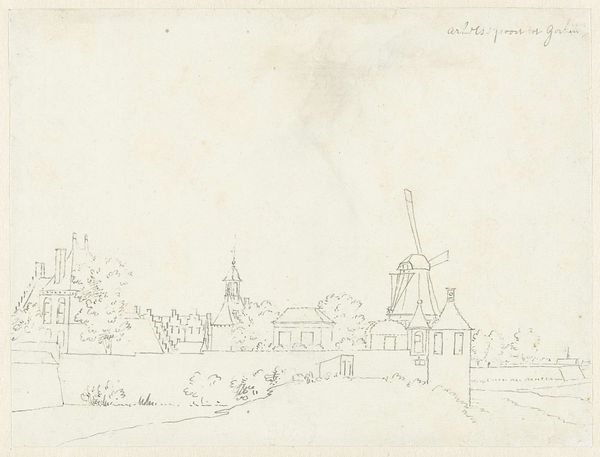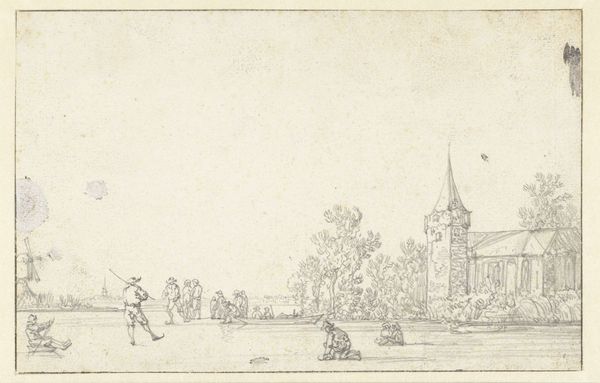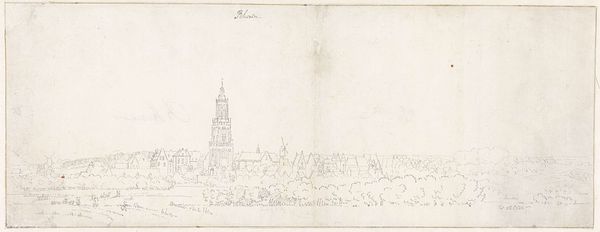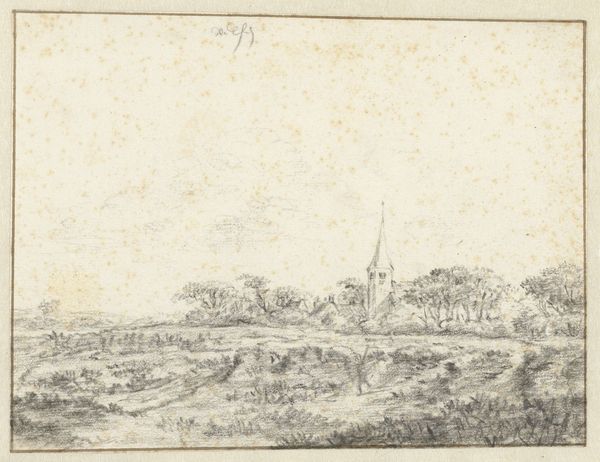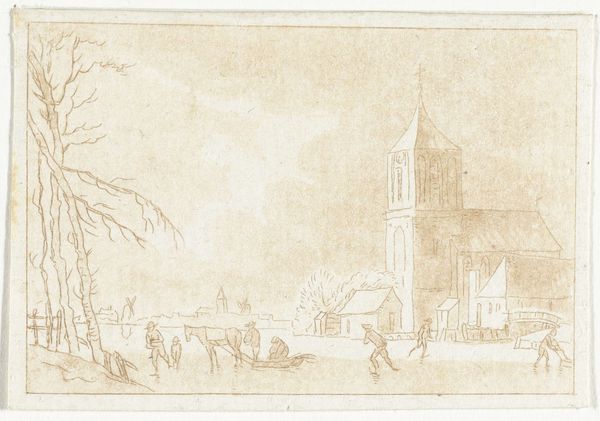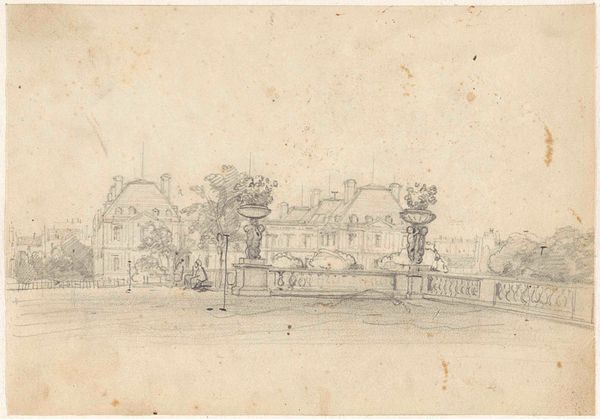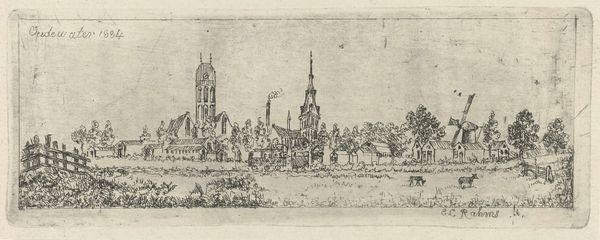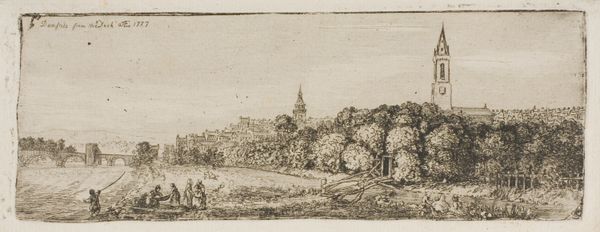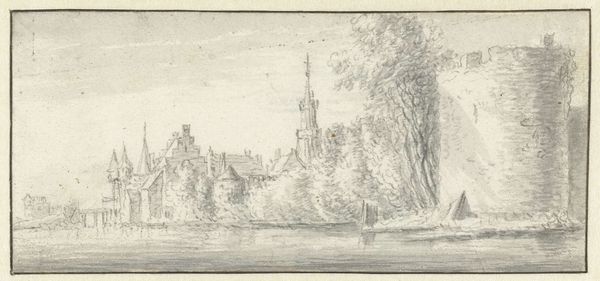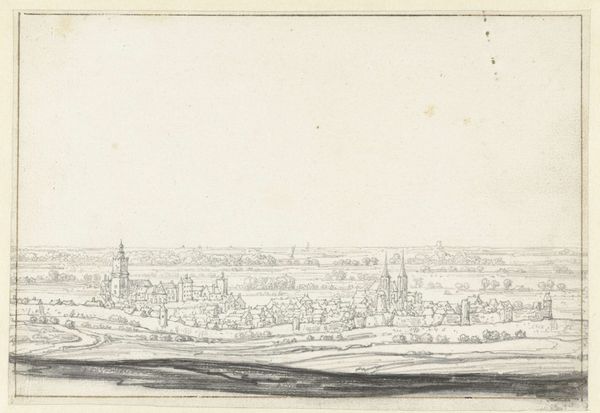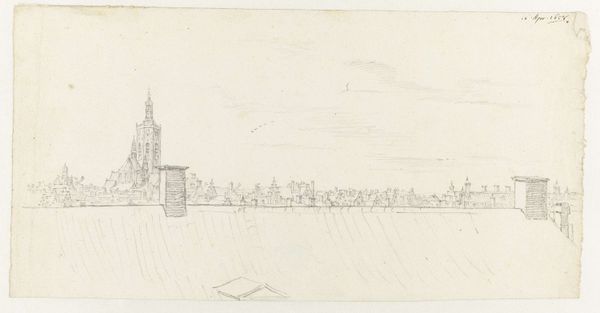
drawing, pen
#
drawing
#
baroque
#
landscape
#
pen work
#
sketchbook drawing
#
pen
Dimensions: height 127 mm, width 200 mm
Copyright: Rijks Museum: Open Domain
Curator: Ah, "Gezicht op Oostvoorne," or "View of Oostvoorne," by Cornelis Pronk, made sometime between 1701 and 1759. It’s currently housed in the Rijksmuseum. Pronk was quite the draughtsman. Editor: My first impression is… ephemeral. Almost like a memory fading. It's rendered so delicately with pen on paper. I immediately notice how light seems to filter through the architecture of this place. Curator: Absolutely. He captures the scene with incredible economy. You can feel the openness of the Dutch landscape and get a very distinct sense of place and a real quiet charm too. It's a fairly detailed pen work, even though the scene feels quite expansive and light, especially as this church anchors everything. What do you read into that anchor, I wonder? Editor: The prominence of the church certainly evokes ideas of stability and order. At the same time, situated as it is within what appears to be a humble town, and represented in such a muted tonality, it really begs the question of access to religious spaces, or who benefits from its order during that era, and what that really signifies in practice. What seems pious to one, is the seat of corruption to another, eh? Curator: A fine point. Perhaps Pronk subtly questioned the church's true role in this community—an artistic commentary if you will! I feel his technical skill enhances the narrative here as well. Editor: True. The technique reinforces it! That almost whispered use of line makes the viewer lean in, search. This reminds me a lot of the way landscape painting later in the 19th century became entwined with concepts of national identity and perhaps hints at Dutch exceptionalism. But Pronk predates all that. Curator: Indeed, he does. I’d say we should give Pronk some due, this simple landscape sketch opens more questions than it seems at first. It speaks to a long legacy of cultural identity formation through art and visual landscapes. Editor: Precisely! It's funny how a seemingly simple drawing can unpack such complex threads of history, power, and artistic intention. Makes you look at old buildings a little differently.
Comments
No comments
Be the first to comment and join the conversation on the ultimate creative platform.
